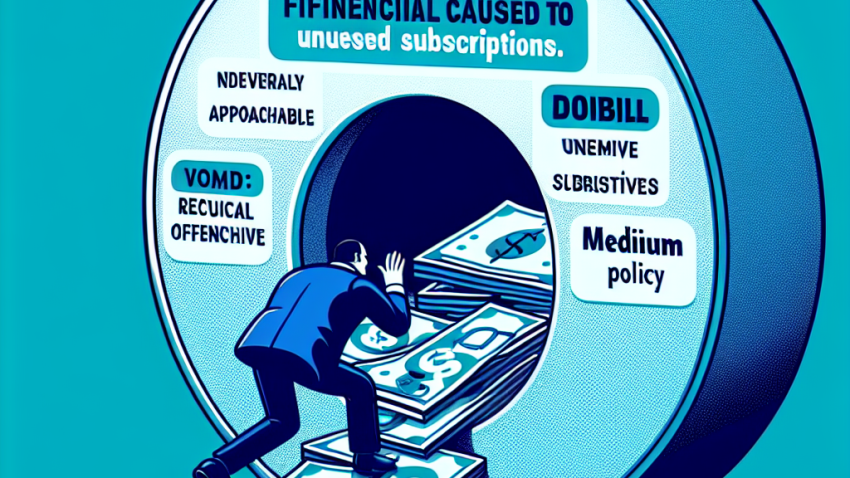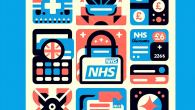
Subscriptions Are Bleeding You Dry – Here’s How to Cancel the Useless Ones
Understanding Your First Budget: A Beginner’s Guide to Taking Control of Your Money
Let’s have a straight talk, shall we? If your checking account is more unpredictable than the weather in April, it might be time to do something radical: create a budget. Don’t panic. I’m not telling you to stop drinking lattes. I’m saying your money deserves a map—and you deserve more peace of mind. Call me Tom, your friendly neighborhood finance coach, and today we’re breaking down budgeting for beginners… without the complicated spreadsheet nightmares. Let’s start with the basics.
What Is a Budget (and Why Should You Care)?
At its core, a budget is simply a plan for how you’ll use your money. Think of it like GPS for your finances—it tells your dollars where to go instead of asking, “Where did all my money go?” at the end of the month.
Budgeting is not about restriction. It’s about intention. Want to travel? Save for a car? Pay off those pesky student loans? Cool. Great. A budget makes those goals more than wishful thinking—it makes them possible.
Step 1: Know Your Numbers (The Good, the Bad, and the Ugly)
Before we dive into pretty pie charts, let’s be honest with ourselves. You need to figure out what’s coming in and what’s going out. Here’s how:
Gather Your Income
- Take-home pay (after taxes)
- Side hustles (Uber driving, tutoring, selling that half-used guitar, etc.)
- Other income (cash gifts, interest from savings, etc.)
Add it all up. This is your monthly income.
List Your Expenses
Time to face your financial reflection. Don’t flinch.
- Fixed expenses: Rent, mortgage, subscriptions, internet
- Variable expenses: Groceries, gas, dining out, entertainment, coffee (yeah, we see you)
- Savings and debt payments: Credit card bills, student loans, emergency fund contributions
Write it all down. This is your monthly spending.
Step 2: Choose a Budgeting Method That Doesn’t Make You Cry
There’s no one-size-fits-all when it comes to budgeting—but don’t worry, I’ve tested them all. Here are the top methods to consider as a beginner:
1. The 50/30/20 Rule
A fan favorite that’s simple and effective:
- 50% of income → Needs (rent, bills, groceries)
- 30% → Wants (streaming, eating out, concert tickets… whatever brings joy)
- 20% → Savings and debt repayment
Easy to remember, realistic to follow. Ideal for beginners! Just make sure you remember the difference between a need and a want. (Hint: Coffee may be life-sustaining, but Starbucks five times a week is a want.)
2. Zero-Based Budgeting
Here, every dollar gets a job. Income – Expenses = Zero. That means if you earn $3,000, you assign every penny to a category. It’s great for people who enjoy detail and structure (or want to know where their money sneaks off to).
3. Envelope System (Old School but Gold)
Literally using envelopes for cash. One for groceries. One for gas. One for snacks. When it’s empty, you stop spending. Works magic for impulse spenders who love the face-slap of reality.
Step 3: Set Goals That Excite You
Why are you budgeting in the first place? (No, “because everyone says I should” doesn’t count.)
Short-Term Goals (1–12 months):
- Build a $1,000 emergency fund
- Pay off one credit card
- Save for a vacation
Long-Term Goals (1 year+):
- Pay off all debt
- Save for a home down payment
- Invest for retirement (yes, even in your 20s!)
Writing goals down increases your chances of actually achieving them. Bonus points if you tape them to your fridge. Double bonus if you create a vision board (don’t mock it before you try it).
Step 4: Track and Adjust Every Month
Budgets are living, breathing tools. They adjust. Life changes. You’ll mess up. You’ll forget things. It’s okay. What matters is reviewing your spending each month and making tweaks. Think of budgeting like going to the gym—it takes repetition, consistency, and a bit of sweat.
Tools to Help You Budget
Don’t go it alone—there are apps and tools out there to lend a hand:
- Mint: Good for beginners, tracks spending automatically
- You Need a Budget (YNAB): For people who want control and love spreadsheets (nerd bonus!)
- Good old Excel or Google Sheets: If you like to customize your own dashboard of power
Common Budgeting Mistakes (and How to Avoid Them)
Let’s cut the learning curve by avoiding a few traps I see all the time:
- Being too strict: If your budget makes you miserable, you won’t stick with it. Leave room for the occasional taco Tuesday.
- Forgetting irregular expenses: Car maintenance, birthday gifts, and your annual Netflix increase still count. Plan for them.
- Not tracking at all: That’s like planning a road trip but never checking the GPS. Come on now.
You’re Not Bad With Money—You Just Never Had a Plan
If no one ever taught you how to budget, of course it feels confusing. School taught us algebra, not how to manage a paycheck.
But now you know better—and you’re ready to start. Start small. Build consistency. Your money doesn’t need to be perfect. It just needs to be under your direction.
Still feeling overwhelmed?
Take one step today—just track your spending for the next 7 days. Write down every dollar, even that $2 pack of gum. It might surprise you where your money’s actually going.
And remember, you’re not alone in this. We’re here to help—always. You can learn more about our mission at About Us or send us a message through Contact Us.
I’m Tom Bradley, your beginner finance coach, and I believe in you. Let’s make your money work the way it should—for you. Budget on, my friend.









Leave a Reply